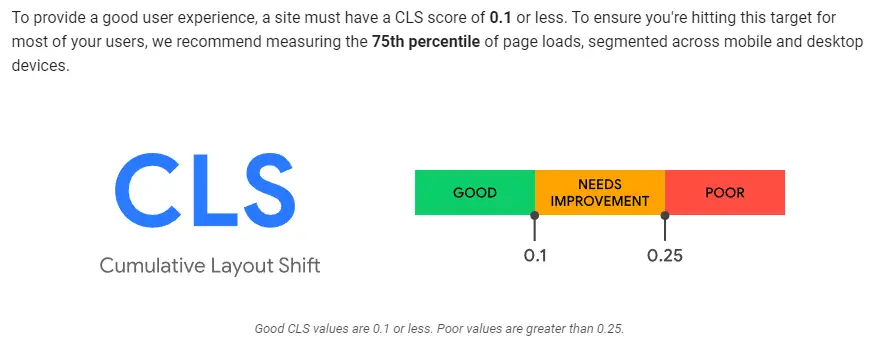
Website Design for Beginners: Essential Tips to Get Started
Creating a website can be a rewarding experience, especially for beginners who want to dip their toes into web design. With a user-friendly approach, you can craft a website that not only looks good but is also functional and easy to navigate. Understanding the basics of UI and UX is crucial to make your website appealing and efficient.

The process of designing your first website involves careful planning and consideration of various elements like typography, color schemes, and layout. It’s essential to keep the user experience in mind, ensuring that visitors can find what they need quickly and enjoyably. By learning the essential skills in HTML and CSS, you can create a functional website from scratch.
Once the design and basic structure are in place, implementing the necessary web technologies and managing your site effectively will set you up for success. Launching and managing your site requires ongoing attention, but with the right knowledge and tools, it can be a smooth experience.
Key Takeaways
- Learn the basics of UI and UX for effective web design.
- Plan your website’s layout and design with the user in mind.
- Implement key web technologies to create and manage your site.
Understanding the Basics of Web Design

To start building a website, one must first grasp the essential components of web design. These basics include understanding layout choices, color schemes, typography, and tools that make the design process smoother.
Defining Web Design and Its Importance
Web design is the creation of websites that are visually appealing and easy to use. It involves the layout, color scheme, typography, and navigation. Good web design is crucial because it impacts user experience, functionality, and accessibility.
An effective website meets the needs of its audience and keeps them engaged. SEO also plays a key role, ensuring the site is found by search engines. The importance of web design rests in its ability to combine aesthetics with functionality for an optimal user journey.
Exploring Core Web Design Principles
Core principles of web design include layout, color, typography, navigation, and user experience. Layout involves organizing content in a grid to create order and balance. Color schemes should complement the site’s purpose and be visually appealing. Typography is about choosing readable fonts that enhance the content.
Navigation should be intuitive, making it easy for users to find what they need. User experience (UX) focuses on how enjoyable and easy it is for users to interact with the site. Accessibility ensures that everyone, including those with disabilities, can use the site effectively. These principles create a cohesive and functional design.
Overview of Web Design Tools and Software
A variety of tools and software help designers create websites. Programs like Adobe XD, Sketch, and Figma are popular for designing layouts and wireframes. For coding, HTML, CSS, and JavaScript are essential. Platforms such as WordPress and Webflow offer more user-friendly options for those who do not code.
Graphic design tools like Adobe Photoshop and Illustrator are used for creating images and graphics. SEO tools like Google Analytics help monitor site traffic and performance. These tools streamline the design process and ensure a well-developed website.
Planning and Designing Your First Website

Planning and designing an effective website involves several key steps such as defining goals, creating layouts, choosing color schemes, and writing content. Each step is crucial for ensuring a cohesive and engaging online presence.
Setting Clear Website Goals
The first step in designing a website is to define what you want to achieve. This could be providing information, selling products, or showcasing a portfolio. Setting clear goals helps determine the site's structure and content.
Consider your target audience and what actions you want them to take. For example, if the goal is to sell products, focusing on an easy-to-navigate shop and a smooth checkout process is essential. Goals guide the design, ensuring that each element serves a purpose and aligns with the brand identity.
Creating Wireframes and Layouts
Creating wireframes and layouts is a crucial step in web design. Wireframes serve as the blueprint of your website, outlining where different elements will go on each page. They focus on functionality and structure without getting into the visual design details.
Using a grid system can help align elements, such as text and images, creating a balanced and organized look. Start with simple sketches or digital tools to map out key sections like the header, content area, and footer. This step ensures that the visual hierarchy is clear and elements are placed for maximum impact.
Selecting Color Palettes and Imagery
Choosing the right color palette and imagery is essential for creating a visually appealing website. Colors can evoke emotions and set the tone for your brand. Utilize color psychology to select hues that match your brand's identity and appeal to your audience.
A mood board is a helpful tool for visualizing how colors and images work together. High-quality, relevant imagery enhances the site’s aesthetics and supports the content. Ensure that images are consistent in style and align with your brand, making your website cohesive and professional.
Writing Effective Web Content
Effective web content is clear, concise, and engaging. Start with a strong headline that grabs attention and follow with easy-to-read paragraphs. Use bullet points and lists to break up text and highlight important information.
Content should align with your website goals, whether it’s to inform, persuade, or entertain. Incorporate keywords naturally to improve search engine visibility. Always write with your audience in mind, addressing their needs and interests to keep them engaged and encourage desired actions.
Implementing Web Technologies

Mastering web technologies involves understanding the basics of HTML and CSS, integrating JavaScript for dynamic content, and choosing the right content management system like WordPress to manage your site efficiently.
Learning HTML and CSS Basics
To start, learning HTML and CSS is essential. HTML, or HyperText Markup Language, structures the content on the web. It uses tags like <h1> for headings and <p> for paragraphs. Each element has an opening and closing tag.
CSS, or Cascading Style Sheets, adds style to the HTML structure. It controls the layout, colors, fonts, and overall appearance. Selectors in CSS target specific HTML elements, allowing for detailed customization.
Understanding the box model in CSS is critical. It includes margins, borders, padding, and the content itself. Practicing with small projects can build these skills. WebFlow suggests starting with simple projects to apply your knowledge effectively.
Integrating JavaScript for Interactivity
JavaScript makes web pages interactive. It allows for tasks like form validation, dynamic content updates, and interactive maps. It runs in the browser, enabling instant feedback without refreshing the page.
JavaScript can manipulate HTML elements using the Document Object Model (DOM). For example, using document.querySelector() selects and changes page elements. Adding event listeners, like click events, allows users to interact with the web page.
JavaScript libraries and frameworks, such as React or jQuery, enhance functionality and efficiency. These tools simplify complex coding tasks, making web development more approachable for beginners.
Choosing the Right Content Management System
A Content Management System (CMS) simplifies web development. It allows users to create, manage, and modify content without coding knowledge. One of the most popular CMS options is WordPress, known for its user-friendly interface and extensive plugin options.
With WordPress, themes and plugins offer customizable design and functionality. WooCommerce, for instance, turns a website into an online store. SEO plugins like Yoast help optimize content for search engines.
Other CMS options include Joomla and Drupal. Each has unique features catering to different needs. SiteWired emphasizes that choosing the right CMS depends on specific requirements, such as ease of use and customization needs.
Launching and Managing Your Site

Launching and managing a website involves several steps, including selecting a domain name, choosing a web host, testing the site, and maintaining it. Proper management ensures your site runs smoothly and remains up-to-date.
Selecting and Registering a Domain Name
Choosing the right domain name is crucial for your website's identity. It should be easy to remember and spell. Avoid using hyphens and numbers as they can be confusing.
Use tools like Wix to check if a domain name is available. Once you find a suitable name, register it through a domain registrar. Popular registrars include GoDaddy and Namecheap. Make sure to renew it annually to keep your domain name active.
Understanding Hosting and Selecting a Web Host
A web host is where your website's files are stored. They make these files accessible on the internet. Providers like Bluehost, SiteGround, and HostGator offer various plans based on your needs.
When choosing a web host, consider factors like uptime, customer service, and cost. Shared hosting is ideal for small business websites, while dedicated hosting suits larger sites with high traffic. Make sure the host supports the CMS you plan to use, such as WordPress or Joomla.
Website Testing and Publishing
Before going live, it's important to test your website. Check for broken links, typos, and design issues. Use tools like Google Analytics and Google Search Console to monitor performance and SEO.
Gather feedback from friends or colleagues to identify any hidden issues. Conduct A/B testing to see which design elements work best. Once you’re satisfied, publish your site through your web host's control panel.
Maintaining and Updating Your Website
Regular updates keep your website secure and relevant. This includes updating the CMS, plugins, and themes. Set a schedule to review your content monthly or quarterly.
Keep an eye on analytics to understand user behavior and improve site layout or content. If you have an ecommerce website, make sure to update your product listings and monitor transactions. Maintain a privacy policy to protect user data.
Frequently Asked Questions

This section addresses common questions about starting out in website design. It includes resources, initial steps, recommended tools, and ways to practice effectively.
What are the best resources for learning website design as a beginner?
Beginners can utilize Wix's step-by-step guide for designing a website from scratch. Another good resource is the beginner's guide by 20k Media, which covers the fundamentals of web design.
Can a beginner learn website design without any prior experience?
Yes, anyone can learn website design without prior experience. Many guides and tutorials, such as the one offered by Webflow, are created specifically for beginners. These resources break down the process into easy-to-follow steps.
What are the initial steps to take when starting to design a website?
The first steps are to choose a domain, decide on a layout, and create engaging content. Guides like the one from Wix suggest starting with a clear plan and understanding your website’s purpose and audience.
Which tools are recommended for beginners to use when designing a website?
For beginners, tools like Wix, Webflow, and WordPress are recommended. These platforms offer templates and drag-and-drop features that simplify the design process. The guide by G2 lists some easy-to-use tools that do not require deep technical knowledge.
Are there any free courses available that cover the basics of website design?
Yes, several free courses cover the basics of website design. Websites like Coursera, edX, and Udemy offer beginner-friendly courses. Some guides, like the one from Webflow, include links to free resources and tutorials.
How can one practice web design skills effectively as a beginner?
Practice by working on small projects, such as designing personal blogs or portfolios. Use interactive platforms like CodePen to build and share your work. Regular practice with real projects and feedback from communities can help improve your skills significantly.






















